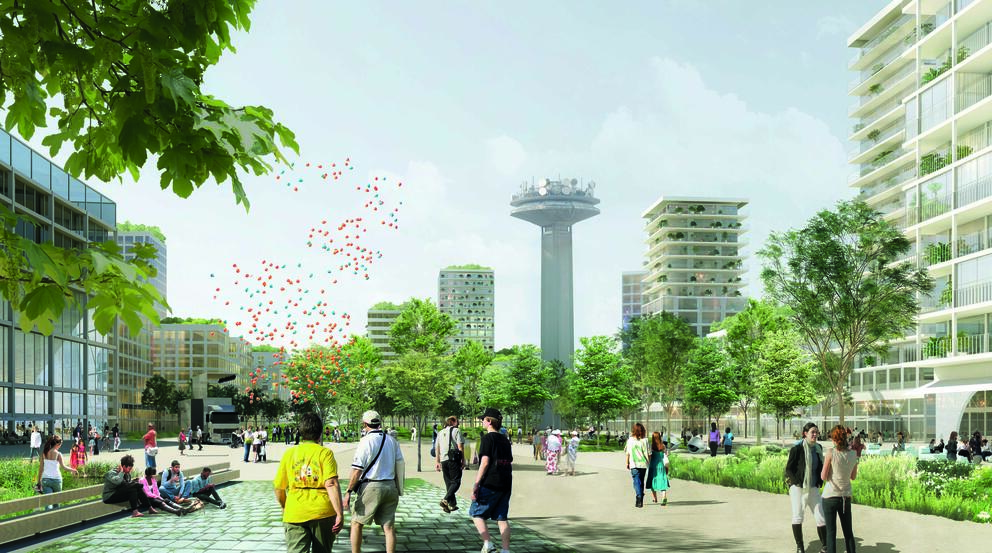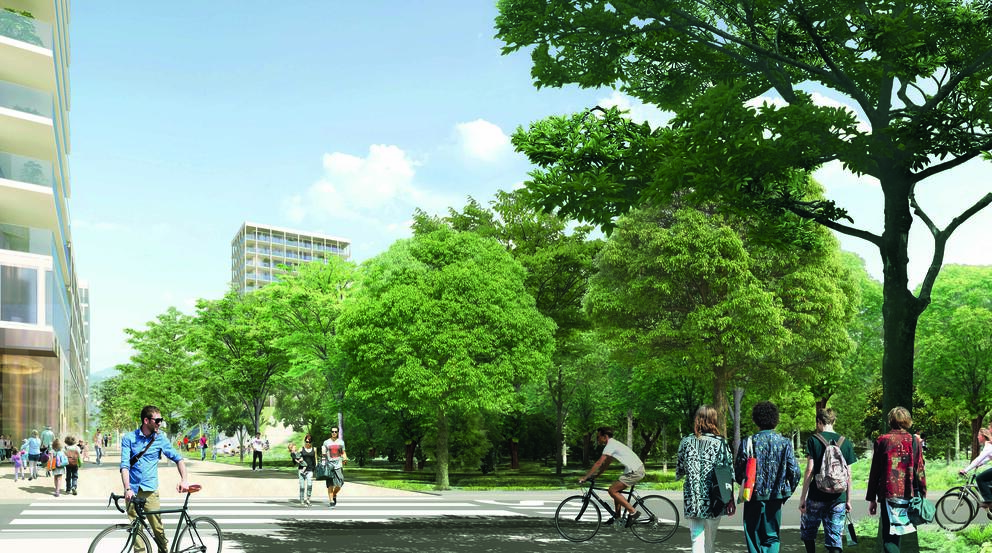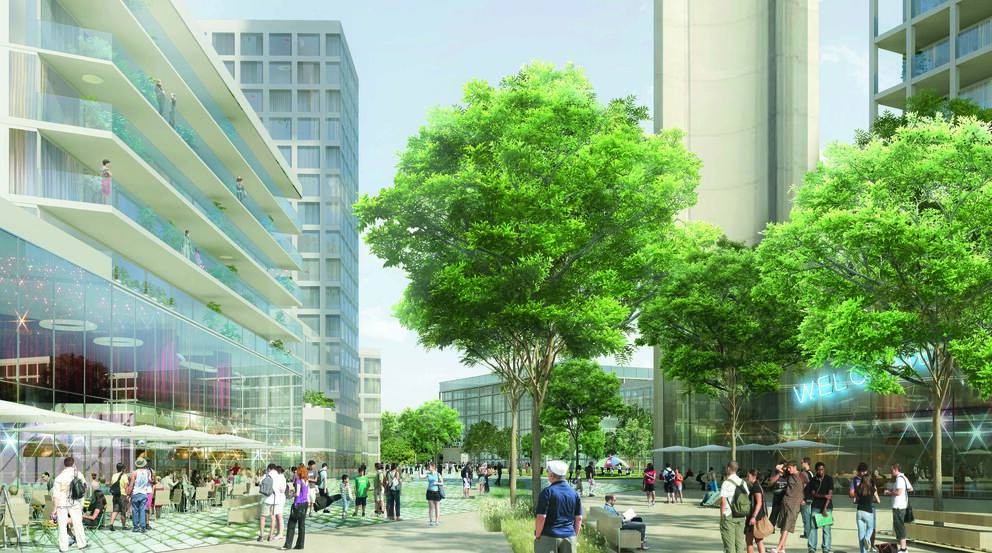Mediapark: the development plan for the future district definitively approved by the Brussels Government!
The last step in the procedure for drawing up the Mediapark development plan (PAD) has been taken by the decision of the Council of Ministers on Thursday 25 April. As a reminder, this ambitious plan aims to redevelop the Reyers site, headquarters of RTBF and VRT televisions, into an residential hub dedicated to the media sector. In addition to approximately 20,000 m² of media activities, nearly 1400 housing units are also planned - including a significant proportion of public housing - but also local shops and facilities of public interest. This development of a new district will take place in the direct vicinity of a new park accessible to the public of nearly 10 hectares, of which at least 2 hectares will be strictly dedicated to the preservation of biodiversity. A first, in the heart of the city!
The Mediapark site is located in the municipality of Schaerbeek but also close to the municipalities of Woluwe-Saint-Lambert and Evere. Formerly owned by the public broadcasting companies RTBF and VRT, the site of approximately 20 hectares was acquired by the Brussels Region with the aim of opening up this piece of territory to its immediate urban environment, in accordance with the Regional Development Plan (PRDD).
Located in an area lacking green spaces accessible to the public, the opening of the site is an opportunity to offer Brussels residents and local residents new public spaces and quality green spaces, but also affordable housing, facilities, local shops as well as spaces for companies and educational establishments active in the media sector.
With this urban project, the development of which was coordinated by perspective.brussels, the Brussels Government wishes to meet four main objectives:
- Deploying the Reyers site as a real media hub - The plan aims to connect this gated site to its urban environment, through a mixed urban program while developing a media hub on a regional and national scale, attractive to both companies and educational institutions active in the media sector.
- Opening up the site to make it an inhabited district – The opening of the site will allow the development of a diversified housing offer and the creation of spaces dedicated to local facilities and shops. The plan also suggests improving the accessibility of the site by public transport by making it possible to build a new tram line. Finally, it plans to set up active mobility routes and enhance bicycle parking.
- Developing a public green space – The plan is structured around a large public green space. This will consist of a more mineral part planted with trees to the west, a central terraced part, and a wooded part, the Bois Georgin, to the east. In terms of heritage, the plan aims to activate the Reyers Tower, a real visual marker of the site
- Integrating biodiversity into urban projects – The modification of the Mediapark PAD was an opportunity for unprecedented work on biodiversity, carried out in collaboration with the Natuurpunt association and Brussels Environment, combining urban development with the preservation of local biodiversity, thanks to a series of measures that will accompany the implementation of the plan.
- Implementing circular economy principles - In order to open up the site to the surrounding neighbourhoods and connect them with green and qualitative public spaces, the existing buildings are to be demolished. In this respect, the plan has high ambitions that are part of a desire for a circular approach and the reuse of materials.
A coherent strategy for the future coordinated by the Urban Development Corporation (SAU-MSI)
A series of large-scale projects are already underway or in preparation at Mediapark, under the coordination of the SAU-MSI, which ensures the complete operationalization of the urban program. They give an enlightening image of the future face of this new media hub. The construction work on the FRAME media house, for which the SAU is the contracting authority, and the new RTBF headquarters (MediaSquare) are nearing completion. The construction site of the future VRT headquarters is in full swing and the building is scheduled to be completed by the end of 2026.
For its part, Beliris is also involved in the site as it finances and is responsible for the development of the project’s public spaces, for which the building application should be submitted soon.
In the immediate vicinity of the Mediapark site, the redevelopment of Boulevard Reyers, the tram project between Meiser and the UCL campus are also contributing to the upcoming transition of this entrance to the city towards urban life and more peaceful mobility.
Minister-President Rudi Vervoort is enthusiastic: "Offering Brussels residents and residents a new, complete urban district that is accessible to all, while respecting and strengthening biodiversity, while supporting the media sector and the Brussels creative industry, is now becoming possible and realistic thanks to the good collaboration of both the private and public sectors. New green spaces, affordable housing and public facilities will help to make the ‘right to the city for all’- principle a reality."
" I am delighted with the approval of this project, generating the accessibility of nearly ten hectares of green spaces, including wooded areas and biodiversity protected perimeters. The Mediapark project will create a new inhabited, pleasant, accessible district with community facilities, while focusing on key sectors in the current economy," says Antoine de Borman, Managing Director of perspective.brussels.
Gilles Delforge, director of the SAU-MSI welcomes this decision: "The adoption of the PAD will now allow the SAU, which ensures the complete operationalization of this urban project, to implement it concretely with all public and private partners. Combined with the completion of the media house, it is therefore a further step in the realization of this new development pole which will both create a new quality urban district integrated into the existing urban fabric, and strengthen the existing economic fabric through an innovative ecosystem focused on the media and creative sectors."



